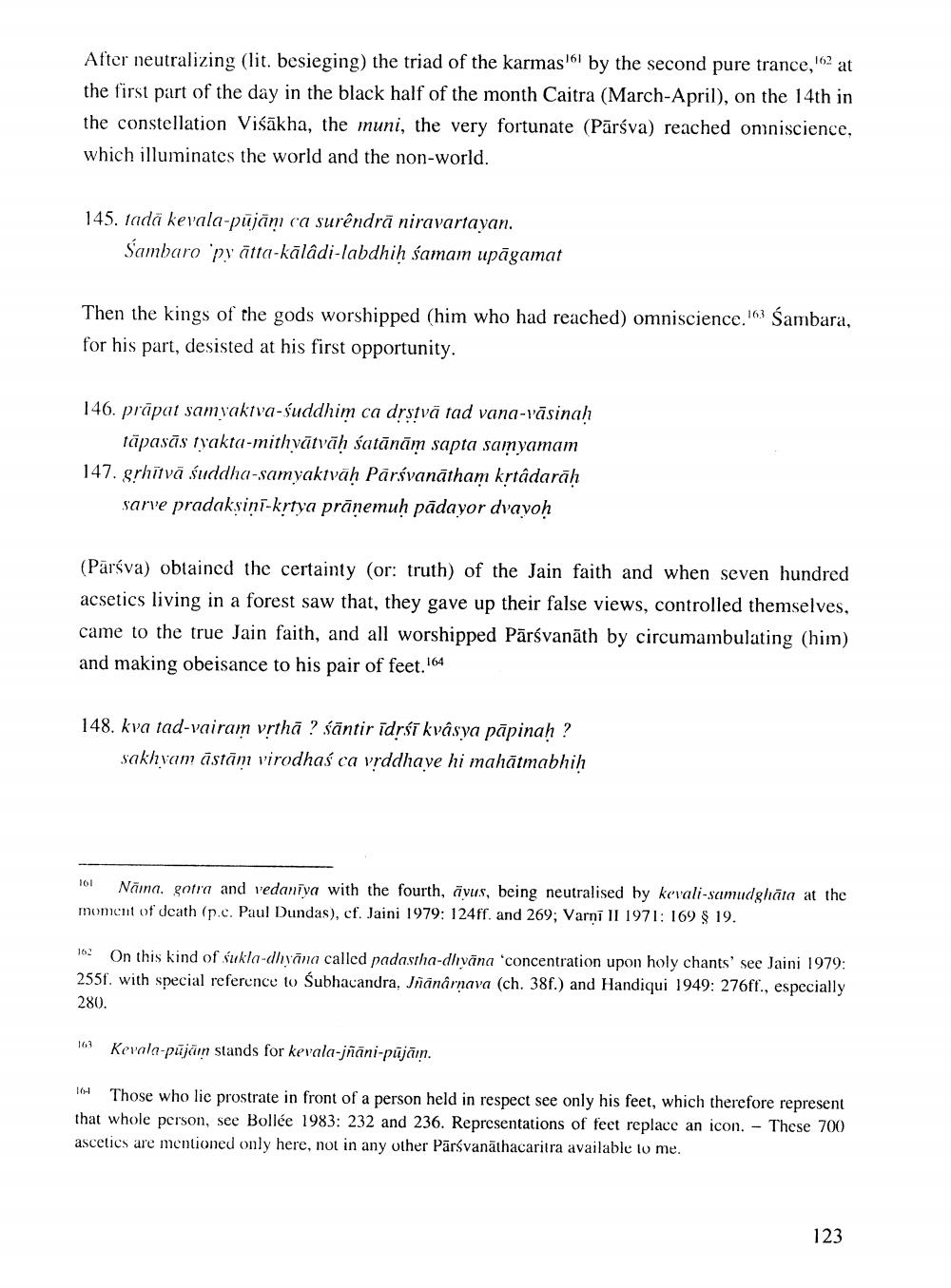________________
After neutralizing (lit. besieging) the triad of the karmas 161 by the second pure trance, 162 at the first part of the day in the black half of the month Caitra (March-April), on the 14th in the constellation Visakha, the muni, the very fortunate (Pärśva) reached omniscience, which illuminates the world and the non-world.
145, tada kevala-pujam ca surêndra niravartayan.
Sambaro 'py atta-kälädi-labdhiḥ samam upagamat
Then the kings of the gods worshipped (him who had reached) omniscience. Sambara, for his part, desisted at his first opportunity.
146. prapat samyaktva-Suddhim ca dṛstvä tad vana-vasinaḥ tapasas yakta-mithyätväḥ satānām sapta samyamam 147. grhitvä suddha-samyaktväḥ Pärsvandtham kṛtâdarāḥ sarve pradakṣini-krtya pranemuḥ padayor dvayoḥ
(Parva) obtained the certainty (or: truth) of the Jain faith and when seven hundred acsetics living in a forest saw that, they gave up their false views, controlled themselves. came to the true Jain faith, and all worshipped Pärsvanath by circumambulating (him) and making obeisance to his pair of feet. 164
148, kva tad-vairam vṛtha? santir īdṛśī kvasya papinaḥ?
sakhyam astam virodhaś ca vṛddhaye hi mahatmabhiḥ
161
Näma, gotra and vedaniya with the fourth, ayus, being neutralised by kevali-samudghata at the moment of death (p.c. Paul Dundas), cf. Jaini 1979: 124ff. and 269; Varni II 1971: 169 § 19.
163
162
On this kind of sukla-dhyana called padastha-dhyana 'concentration upon holy chants' see Jaini 1979: 255f. with special reference to Subhacandra, Jianârnava (ch. 38f.) and Handiqui 1949: 276ff., especially
280.
163
Kevala-pujām stands for kevala-jñāni-pūjām.
164 Those who lie prostrate in front of a person held in respect see only his feet, which therefore represent that whole person, see Bollée 1983: 232 and 236. Representations of feet replace an icon. - These 700 ascetics are mentioned only here, not in any other Pārsvanathacaritra available to me.
123




